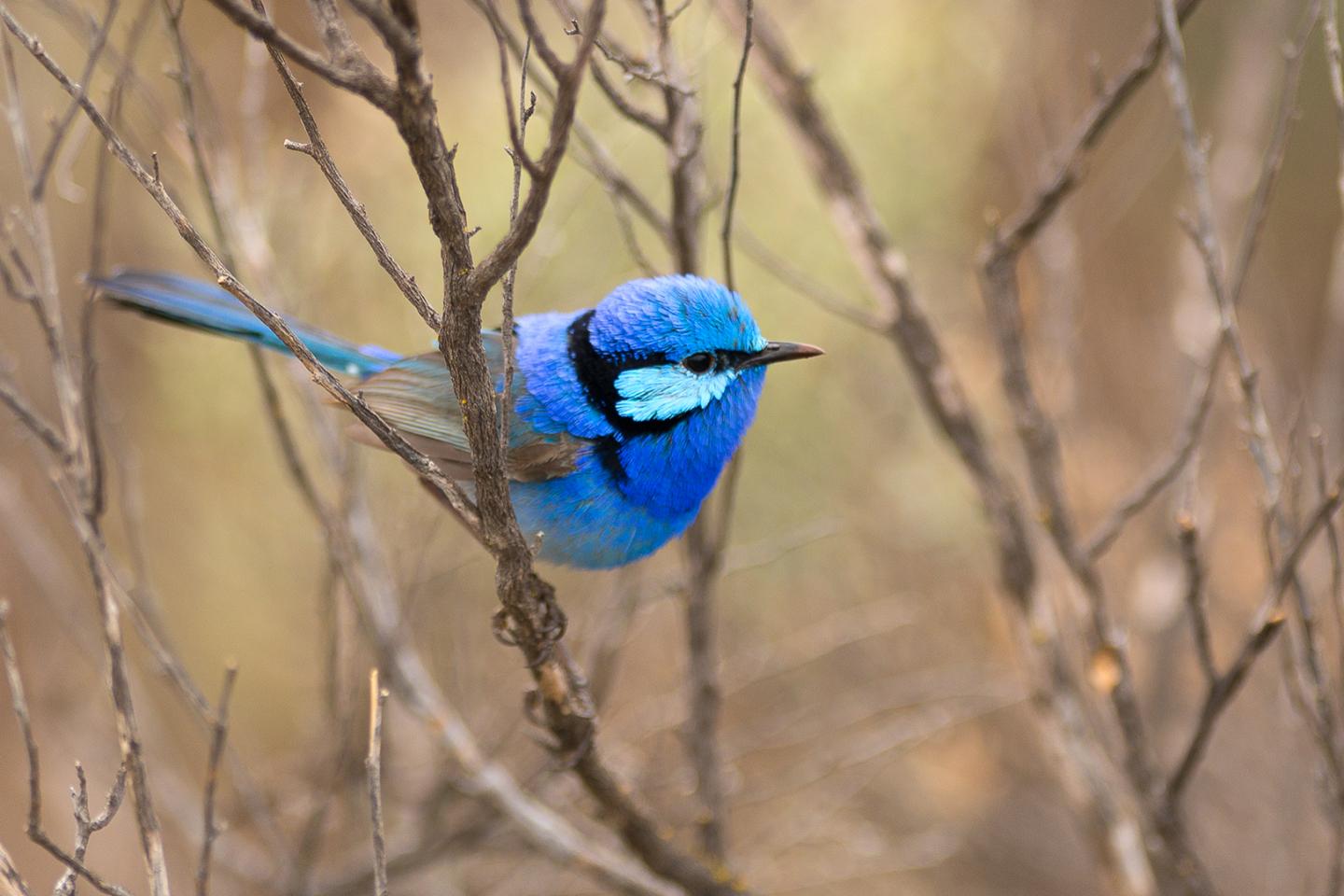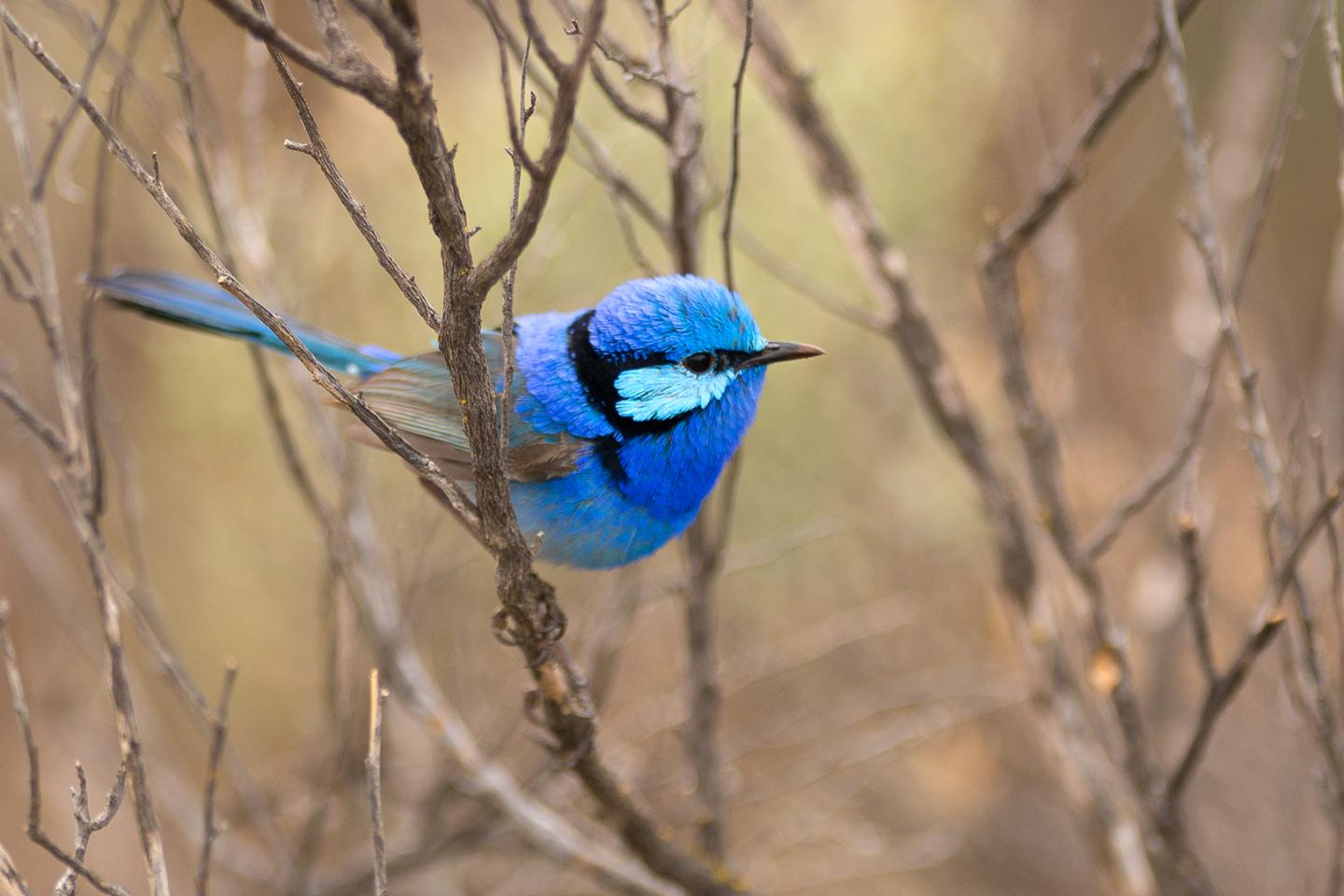
Credit: Allison Johnson
Cooperation among different species of birds is common. Some birds build their nests near those of larger, more aggressive species to deter predators, and flocks of mixed species forage for food and defend territories together in alliances that can last for years. In most cases, though, these partnerships are not between specific individuals of the other species–any bird from the other species will do.
But in a new study published in the journal Behavioral Ecology, scientists from the University of Chicago and University of Nebraska show how two different species of Australian fairy-wrens not only recognize individual birds from other species, but also form long-term partnerships that help them forage and defend their shared space as a group.
"Finding that these two species associate was not surprising, as mixed species flocks of birds are observed all over the world," said Allison Johnson, PhD, a postdoctoral scholar at the University of Nebraska who conducted the study as part of her dissertation research at UChicago. "But when we realized they were sharing territories with specific individuals and responding aggressively only to unknown individuals, we knew this was really unique. It completely changed our research and we knew we had to investigate it."
Variegated fairy-wrens and splendid fairy-wrens are two small songbirds that live in Australia. The males of each species have striking, bright blue feathers that make them popular with bird watchers. Their behavior also makes them an appealing subject for biologists. Both species feed on insects, live in large family groups, and breed during the same time of year. They are also non-migratory, meaning they live in one area for their entire lives, occupying the same eucalyptus scrublands that provide plenty of bushes and trees for cover.
When these territories overlap, the two species interact with each other. They forage together, travel together, and seem to be aware of what the other species is doing. They also help each other defend their territory from rivals. Variegated fairy-wrens will defend their shared territory from both variegated and splendid outsiders; splendid fairy-wrens will do the same, while fending off unfamiliar birds from both species.
"Splendid and variegated fairy-wrens are so similar in their habitat preferences and behavior, we would expect them to act as competitors. Instead, we've found stable, positive relationships between individuals of the two species," said Christina Masco, PhD, a graduate student at UChicago and a co-author on the new paper.
Many songbirds can recognize familiar members of their own species on the basis of the unique songs each bird sings. However, in this research the investigators believed this recognition occurred across species. How could they be so certain?
From 2012-2015, Johnson, Masco, and their former advisor, Stephen Pruett-Jones, PhD, associate professor of ecology and evolution at UChicago, studied these species at Brookfield Conservation Park in South Australia. The first unusual observation Johnson made was that when playing a recorded vocalization of one species, the other species would respond and fly in to investigate what was going on.
To follow up on this observation, the researchers monitored both fairy-wren species in the darkness before dawn and captured clear recordings of their signature songs. After sunrise, they broadcast the recorded songs from a speaker to simulate an intrusion by a particular bird into a group's territory. The objective was to see how territory owners reacted to the songs of familiar and unfamiliar members of the other species.
The researchers placed a speaker about 30 meters away from a subject fairy-wren and played the songs of four different individuals: a fairy-wren that occupied the same territory (a co-resident or "friendly" bird), a fairy-wren from an adjacent territory (a neighbor), a fairy-wren from an area five or more territories away (an unknown bird), and a red-capped robin, a common species in the park that doesn't pose a threat to the fairy-wrens (as a control group).
Both splendid and variegated fairy-wrens demonstrated the ability to recognize their co-residents' songs despite the species difference. Socially dominant males of both species responded more aggressively to songs of neighbors and unknown birds of the other fairy-wren species than they did to friendly birds sharing their territory, or to the red-capped robin. When they heard songs from friendly birds, they didn't respond, suggesting they didn't see them as a threat.
By forming and keeping these associations with another species, fairy-wrens can better defend their nests from predators and their territories from rivals. There is also evidence that interacting with the other species has additional benefits besides territorial defense. While the splendid fairy-wrens didn't change their behavior when associating with the other species, the variegated fairy-wrens spent more time foraging, were less vigilant, and had more success raising their young.
Johnson, Masco, and Pruett-Jones believe the fairy-wrens associate with the other species as a form of cooperation. By interacting with other species that share the same territory instead of working against them, these already social species create a larger group to help defend their territory and ward off intruders. In other words, if you can't beat 'em, join 'em.
"Although our discovery that individuals of different species recognize each other was unexpected, it is likely that something similar occurs whenever species of non-migratory birds live on overlapping territories," Pruett-Jones said. "Recognition facilitates sociality within species, and it follows that it could also facilitate associations between species."
###
The study, "Song recognition and heterospecific associations between two fairy-wren species (Maluridae)," was supported by the National Science Foundation, UChicago, the Norman Wettenhall Foundation, and the American Ornithological Society.
Media Contact
Matt Wood
[email protected]
@UChicagoMed
http://www.uchospitals.edu
Related Journal Article
http://dx.doi.org/10.1093/beheco/ary071




